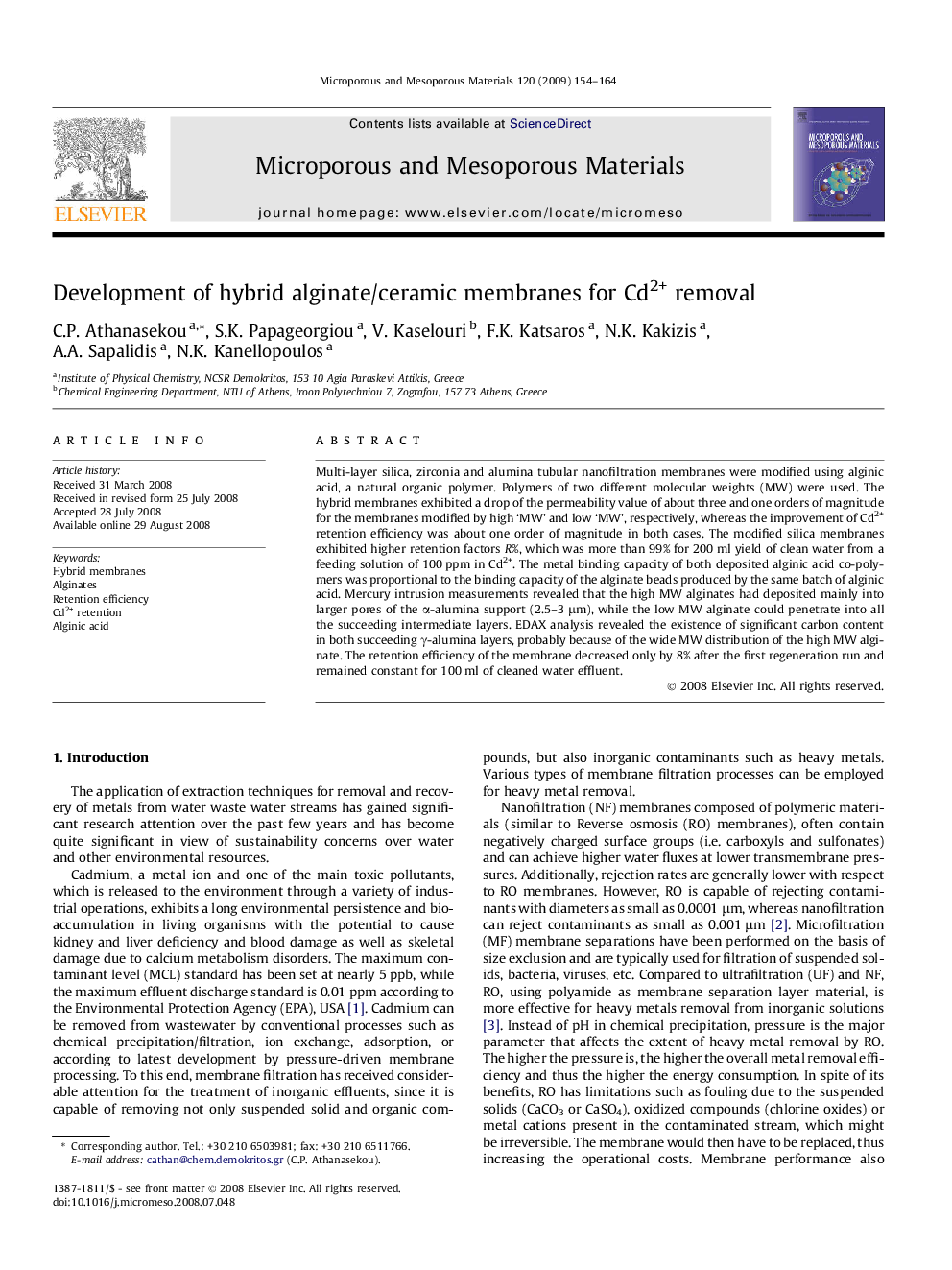| Article ID | Journal | Published Year | Pages | File Type |
|---|---|---|---|---|
| 76348 | Microporous and Mesoporous Materials | 2009 | 11 Pages |
Multi-layer silica, zirconia and alumina tubular nanofiltration membranes were modified using alginic acid, a natural organic polymer. Polymers of two different molecular weights (MW) were used. The hybrid membranes exhibited a drop of the permeability value of about three and one orders of magnitude for the membranes modified by high ‘MW’ and low ‘MW’, respectively, whereas the improvement of Cd2+ retention efficiency was about one order of magnitude in both cases. The modified silica membranes exhibited higher retention factors R%, which was more than 99% for 200 ml yield of clean water from a feeding solution of 100 ppm in Cd2+. The metal binding capacity of both deposited alginic acid co-polymers was proportional to the binding capacity of the alginate beads produced by the same batch of alginic acid. Mercury intrusion measurements revealed that the high MW alginates had deposited mainly into larger pores of the α-alumina support (2.5–3 μm), while the low MW alginate could penetrate into all the succeeding intermediate layers. EDAX analysis revealed the existence of significant carbon content in both succeeding γ-alumina layers, probably because of the wide MW distribution of the high MW alginate. The retention efficiency of the membrane decreased only by 8% after the first regeneration run and remained constant for 100 ml of cleaned water effluent.
